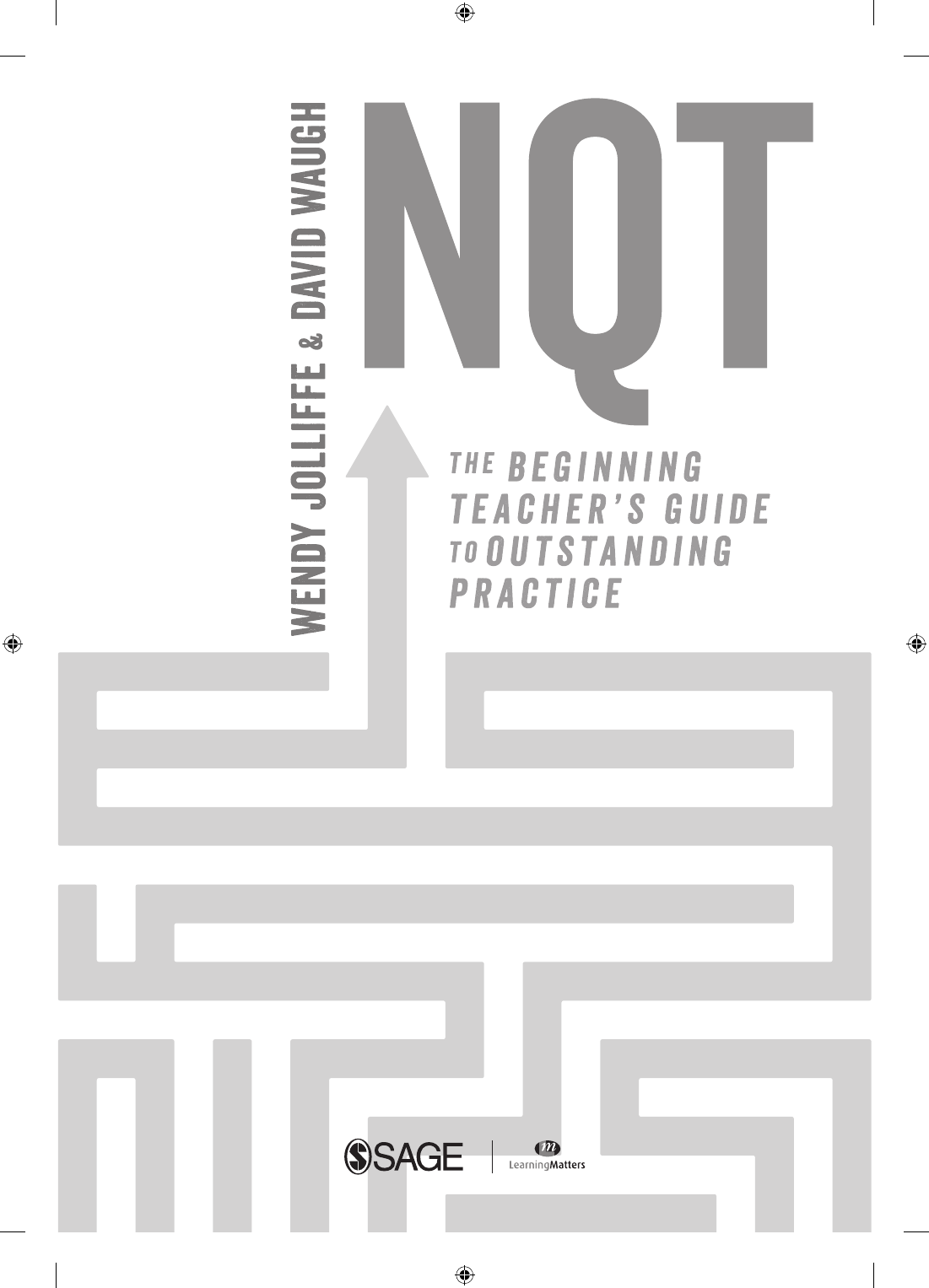
00_WAUGH_BTGOP_FM.indd 3 4/26/2017 10:54:19 AM
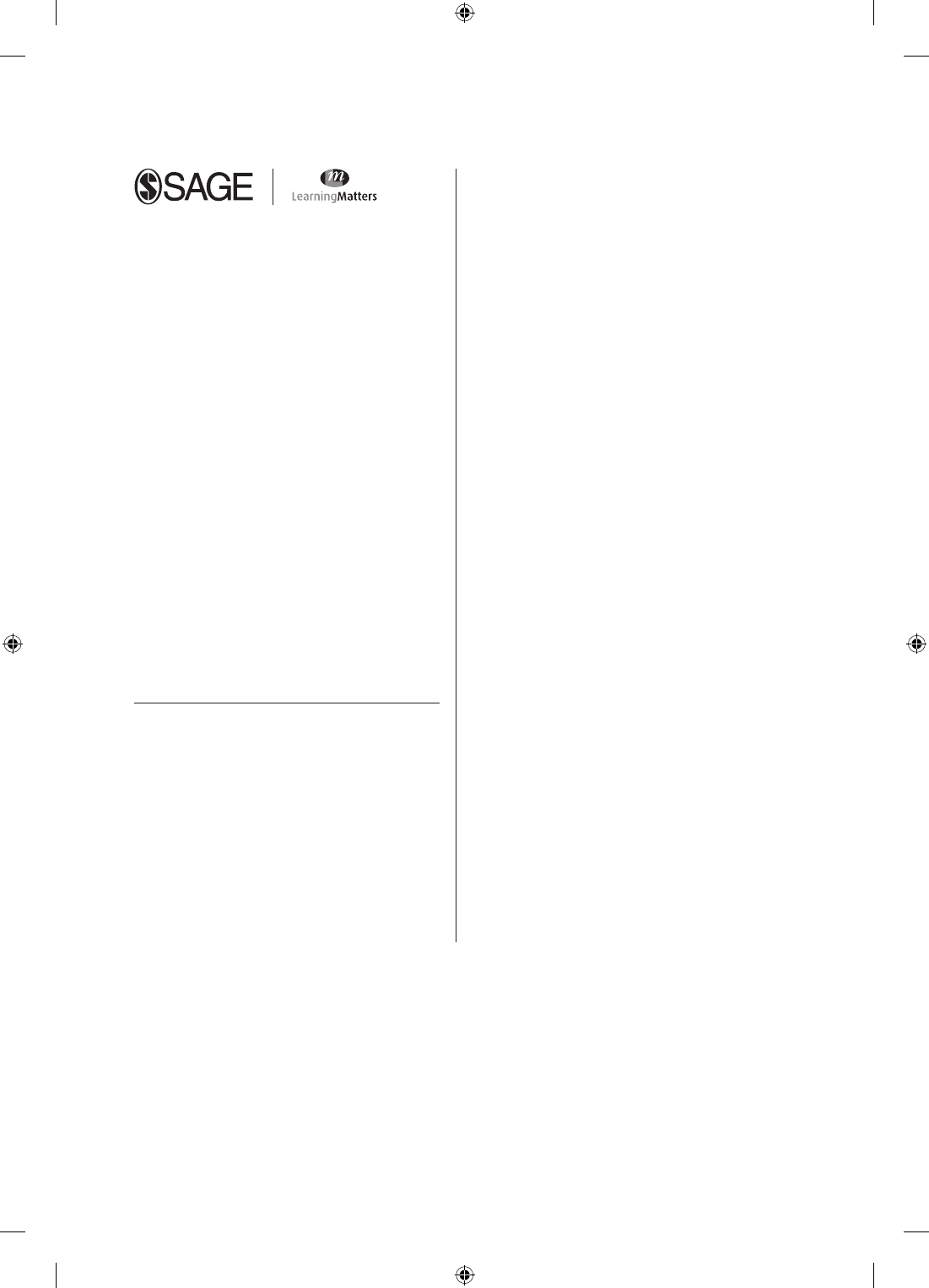
Learning Matters
An imprint of SAGE Publications Ltd
1 Oliver’s Yard
55 City Road
London EC1Y 1SP
SAGE Publications Inc.
2455 Teller Road
Thousand Oaks, California 91320
SAGE Publications India Pvt Ltd
B 1/I 1 Mohan Cooperative Industrial Area
Mathura Road
New Delhi 110 044
SAGE Publications Asia-Pacic Pte Ltd
3 Church Street
#10-04 Samsung Hub
Singapore 049483
Editor: Amy Thornton
Production controller: Chris Marke
Project management: Deer Park Productions
Marketing manager: Dilhara Attygalle
Cover design: Wendy Scott
Typeset by: C&M Digitals (P) Ltd, Chennai, India
Printed in the UK
2017 Editorial matter Wendy Jolliffe and David
Waugh; Chapter 1 Yasmin Valli; Chapters 2 and 11
Wendy Jolliffe; Chapter 3 Wendy Delf; Chapter 4
Hilary Smith; Chapter 5 Julia Lawrence; Chapters 6
and 7 Paul Hopkins; Chapter 8 Claire Head; Chapter
9 Kamil Trzebiatowski; Chapter 10 John Bennett;
Chapter 12 Jonathan Doherty and David Waugh;
Chapter 13 Alison McManus
Apart from any fair dealing for the purposes of
research or private study, or criticism or review, as
permitted under the Copyright, Designs and Patents
Act 1988, this publication may be reproduced, stored
or transmitted in any form, or by any means, only with
the prior permission in writing of the publishers, or in
the case of reprographic reproduction, in accordance
with the terms of licences issued by the Copyright
Licensing Agency. Enquiries concerning reproduction
outside those terms should be sent to the publishers.
Library of Congress Control Number: 2017935030
British Library Cataloguing in Publication Data
A catalogue record for this book is available from the
British Library
ISBN 978 1 4739 9912 1 (pbk)
ISBN 978 1 4739 9911 4
At SAGE we take sustainability seriously. Most of our products are printed in the UK using FSC papers and boards.
When we print overseas we ensure sustainable papers are used as measured by the PREPS grading system.
We undertake an annual audit to monitor our sustainability.
00_WAUGH_BTGOP_FM.indd 4 4/26/2017 10:54:19 AM

Contents
Acknowledgements vii
About the Editors and Contributors ix
About this Book 1
The Teachers’ Standards 7
1 The Teachers’ Standards 12
Yasmin Valli
2 Effective Learning 36
Wendy Jolliffe
3 Effective Teaching 54
Wendy Delf
4 Behaviour for Learning 66
Hilary Smith
5 Reflecting on Your Teaching 82
Julia Lawrence
6 Using Evidence to Inform Teaching 94
Paul Hopkins
7 Technology and the New Teacher 109
Paul Hopkins
8 Speech, Language and Communication Needs 127
Claire Head
00_WAUGH_BTGOP_FM.indd 5 4/26/2017 10:54:19 AM

Contents
vi
9 Building Academic Language in Learners of English as an Additional Language:
From Theory to Practical Classroom Applications 143
Kamil Trzebiatowski
10 Grammar, Punctuation and Spelling (GPS): Finding Your Way through
the First Year of Teaching 165
John Bennett
11 Supporting Struggling Readers and the Role of Phonics 179
Wendy Jolliffe
12 The Wider Role of the Teacher 199
Jonathan Doherty and David Waugh
13 Being Mindful of Teacher Well-being 216
Alison McManus
Conclusion 229
Index 231
00_WAUGH_BTGOP_FM.indd 6 4/26/2017 10:54:19 AM
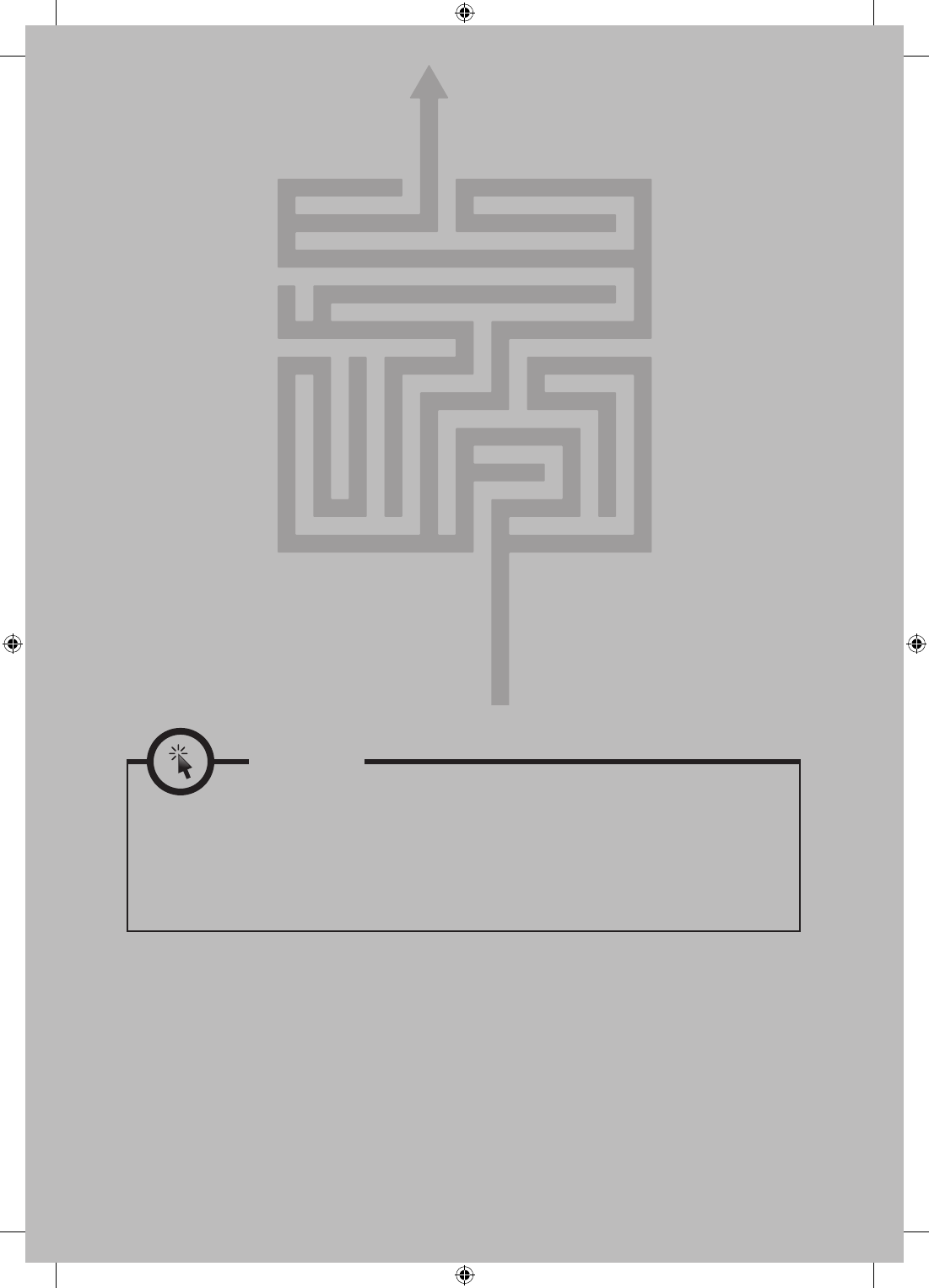
4
Behaviour for Learning
Hilary Smith
This chapter
By reading this chapter you will develop your understanding of the following.
• The context and concept of Behaviour for Learning (B4L).
• The practical application of an intervention for children in a highly charged emotional state.
• Whole-class systems for establishing a positive learning environment.
06_WAUGH_BTGOP_CH_04.indd 66 4/26/2017 10:59:12 AM
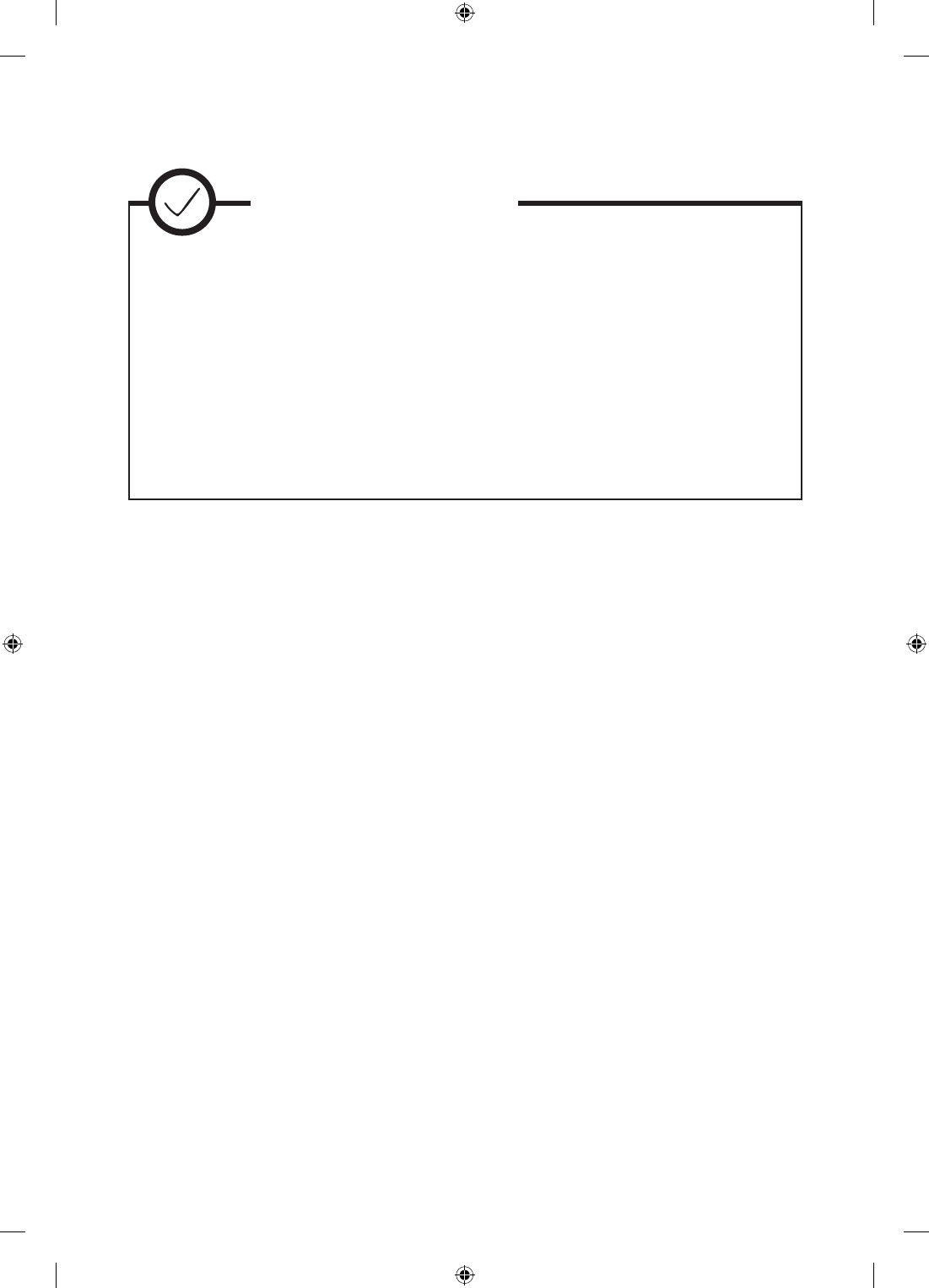
4 Behaviour for Learning
67
Links to the Teachers’ Standards
This chapter will help you with the following Teachers’ Standards.
7. Manage behaviour effectively to ensure a good and safe learning environment
• Have clear rules and routines for behaviour in classrooms, and take responsibility for
promoting good and courteous behaviour both in classrooms and around the school, in
accordance with the school’s behaviour policy.
• Have high expectations of behaviour, and establish a framework for discipline with a range of
strategies, using praise, sanctions and rewards consistently and fairly.
• Manage classes effectively, using approaches which are appropriate to pupils’ needs in order
to involve and motivate them.
• Maintain good relationships with pupils, exercise appropriate authority, and act decisively
when necessary.
Introduction
The behaviour of children in schools or, rather, their misbehaviour, is frequently cited as one of the
main reasons for teachers leaving the profession early in their careers. Persistent disruption by one
or more children in the classroom, if it continues unabated, can lead to feelings of frustration and
inadequacy, and become a source of considerable anxiety and stress, especially for NQTs.
Advice and support on behaviour issues can come in many guises and it can be challenging for any
teachers, not just NQTs, to navigate the plethora of government documents, academic research,
advice from so-called ‘experts’ and various ‘top-tips for teachers’ to find what is statutory, what is
useful and what will most effectively support their classroom practice.
It would be impossible in one short chapter to provide definitive advice on such a broad and amor-
phous aspect of teaching as behaviour, so the focus here is to address the key concerns frequently
raised by new teachers who have developed ideas during their initial training on how they would
like to manage their own class (and how they would not like to) and who now have the opportunity
to build on those ideas and put them into practice.
The themes explored here focus on how to establish and maintain a positive learning environment
based on building meaningful relationships with children rather than depending on traditional
behaviourist methods to ‘manage’ them. It recognises the aspirations of those new to the profession
who wish be transformative in their teaching without controlling or suppressing children’s natural
curiosity and enthusiasm, but who also want robust, tried and tested, methods for providing order
and safety in their classroom, and effective systems that promote self-efficacy and self-regulation in
their young learners.
The chapter is divided into three parts. The first part sets the scene by providing the background
to the concept of Behaviour for Learning (B4L), explains how the conceptual framework works and
provides a case study to illustrate its practical application. The second part considers the issue of
06_WAUGH_BTGOP_CH_04.indd 67 4/26/2017 10:59:12 AM

4 Behaviour for Learning
68
attachment needs, an aspect of behaviour which teachers are increasingly concerned with, and
focuses on a particular intervention, emotion coaching, which has shown to be very effective in
calming down children who are in a highly charged emotional state. The third and final part reflects
on classroom codes and describes the use of class charters as a positive alternative to the traditional
practice of using ‘top-down’ rules.
Research/evidence focus
Behaviourism v. Behaviour for Learning
In 2004, Powell and Tod published A Systematic Review of how Learning Theories Explain Learning
Behaviour in School Contexts, which resulted in the development of a conceptual framework for
behaviour in schools with the term ‘learning behaviour’ being coined and the phrase ‘Behaviour
for Learning’ (B4L) becoming widely used by teachers and academics (Ellis and Tod, 2009). It also
spawned a government-funded website Behaviour4learning (now archived) which provided a compre-
hensive platform for research and evidence-based advice and guidance for teachers on all aspects of
behaviour in schools. It coincided with the Steer Report (DfES, 2005a), which made extensive recom-
mendations to support teachers in establishing and maintaining positive learning behaviour in their
classrooms. The focus of advice for teachers at that time recognised research into children’s motiva-
tion, self-esteem and self-regulation, and promoted approaches in schools that took account of social
and emotional aspects of learning and emotional literacy (DfES, 2005b). Since then, successive gov-
ernments have disregarded the B4L approach; it is not evident in the current Teachers’ Standards
(DfE, 2012a) or reflected in any recent government documents on behaviour (DfE, 2011, 2012b, 2016a).
The return to the rhetoric of discipline, designed to regenerate teachers as figures of authority, was
based on the popular notion that teachers were no longer being treated with respect and that behav-
iour in schools had become a source of serious concern with many children’s behaviour out of control
(Paton, 2014). Rooted in a behaviourist approach, official guidance on behaviour management tech-
niques since 2010 has relied on controlling children’s behaviour through rules, rewards and sanctions.
Critics comment that reverting to the language of‘misbehaviour’ and ‘punishment’ espouses a deficit
model of behaviour, which implies that children have to be controlled and ‘managed’ by adults before
any learning can take place and ignores the significant psychological evidence to the contrary (Adams,
2009; Rose etal., 2013; Ellis and Tod, 2015).
The Behaviour for Learning Conceptual framework
Ellis and Tod’s guiding framework for B4L (see Figure 4.1) emphasises the importance of relation-
ships with self, others and the curriculum, to encourage positive learning behaviour and a classroom
ethos where self-efficacy and agency can flourish.
The framework places learning behaviour at its centre, recognising that the shared aim is to pro-
mote behaviour that enables effective learning. It is placed within a triangle that represents the
social, emotional and cognitive factors which are addressed through the three relationships with
self (engagement), others (participation) and the curriculum (access). The arrows surrounding the
triangle indicate that the development of learning behaviour is a dynamic process and the three
06_WAUGH_BTGOP_CH_04.indd 68 4/26/2017 10:59:12 AM

4 Behaviour for Learning
69
relationships are interrelated. School ethos encompasses the triangle, and acknowledges the context
within which learning behaviour exists, and the terms outside of this boundary are a reminder that
learning does not take place in a vacuum and there are external influences which impact on pupils’
dispositions to learning.
In order to use the B4L framework as an effective tool, teachers need to give attention to each of the
three relationships which are summarised below.
Engagement (relationship with self)
Engagement refers to the internal thoughts, perceptions and feelings that learners hold about
themselves. Resistance to learning and challenging behaviour can occur when learners lack self-
awareness, have low self-esteem or have an impaired or inflated view of themselves and how others
see them. An inability to recognise their own emotional state or the feelings of others can also be a
significant barrier to positive learning behaviour. Teachers can address these issues at a classroom
level by using methods which encourage self-efficacy (helping children to have achievable goals),
metacognition (helping children to understand and reflect on how they know what they know) and
emotional literacy (helping children to recognise their emotions and respond appropriately to the
feelings of others).
Community/
Culture(s)
Policies
Participation
Relationship
with
Others
Learning
Behaviour
Access
Relationship
with the
Curriculum
Engagement
Relationship
with Self
FamilyServices
S
c
h
o
o
l
E
t
h
o
s
S
c
h
o
o
l
E
t
h
o
s
S
c
h
o
o
l
E
t
h
o
s
S
c
h
o
o
l
E
t
h
o
s
Figure 4.1 The Behaviour for Learning conceptual framework
Source: Ellis, S and Tod, J (2015) Promoting Behaviour for Learning in
the Classroom. Abingdon: Routledge, p11.
06_WAUGH_BTGOP_CH_04.indd 69 4/26/2017 10:59:12 AM

4 Behaviour for Learning
70
Participation (relationship with others)
Participation refers to the interactions that take place between peers, and between children and adults.
Its theoretical origins can be found in social learning theory (Bandura, 1971) and included in the
pathology of human behaviour (Maslow, 1976) as well as ecological systems theory (Bronfenbrenner,
1979). More recent neuroscientific research highlights social relationships, particularly with early
attachment figures, as being an essential component for developing neural pathways and crucial in
having the ability to engage in learning at all (Gerhardt, 2014; Music, 2016). To support this aspect of
B4L, teachers need to be proactive in creating an ethos where social engagement, cooperation and col-
laboration are encouraged, and a sense of belonging and group cohesion are supported.
Access (relationship with the curriculum)
Access refers to the way in which learners access, process and respond to the information imparted
to them. It requires teachers to consider how to transmit learning through active, dynamic interac-
tions that engage and challenge all children. It addresses the need to navigate through a largely
subject-based curriculum with prescribed age-related outcomes in a way that captures the interest
and absorption of self-initiated exploration. Revisiting the play-based principles of early years educa-
tion can provide a useful and significant direction here (Bennett and Henderson, 2013), as can the
suggestions for active learning (Vickery, 2014). When teachers encounter children who persistently
fail to be engaged with school work, they can support them through a range of strategies, includ-
ing openly exploring the child’s perspective with them, being more explicit about the purpose and
meaning of tasks, building in mechanisms that enable dialogue and negotiation of how goals can be
met, and establishing feedback systems that support self-worth (Higgins etal., 2007).
The three relationships outlined above, which comprise the B4L model, provide a structure for
teachers to use as a basis for establishing positive learning behaviours in their classroom and to trou-
bleshoot any challenging behaviour they may encounter.
The following case study illustrates an example of its use in solving a common classroom problem.
Case Study
Using the B4L framework to manage a boisterous reception class
Sarah is an NQT in a reception class in a one-form entry urban primary school. She successfully com-
pleted her final placement at the school while on her PGCE and was thrilled to have gained a post there.
Sarah’s first term went well and by November she felt confident that she had established positive rela-
tionships with the children in her class and set clear rules and routines. However, as the winter months
approached, she noticed that the atmosphere in the classroom had become quite boisterous. Each day
began calmly enough, but by mid-morning noise levels had risen considerably and by lunchtime there
was normally at least one incident of a child complaining of being shouted at or hurt by another child.
Sarah’s usual system of praising positive behaviour and disapproving of inappropriate behaviour was
becoming increasingly ineffective and she was feeling anxious about losing control of the class. She
06_WAUGH_BTGOP_CH_04.indd 70 4/26/2017 10:59:12 AM
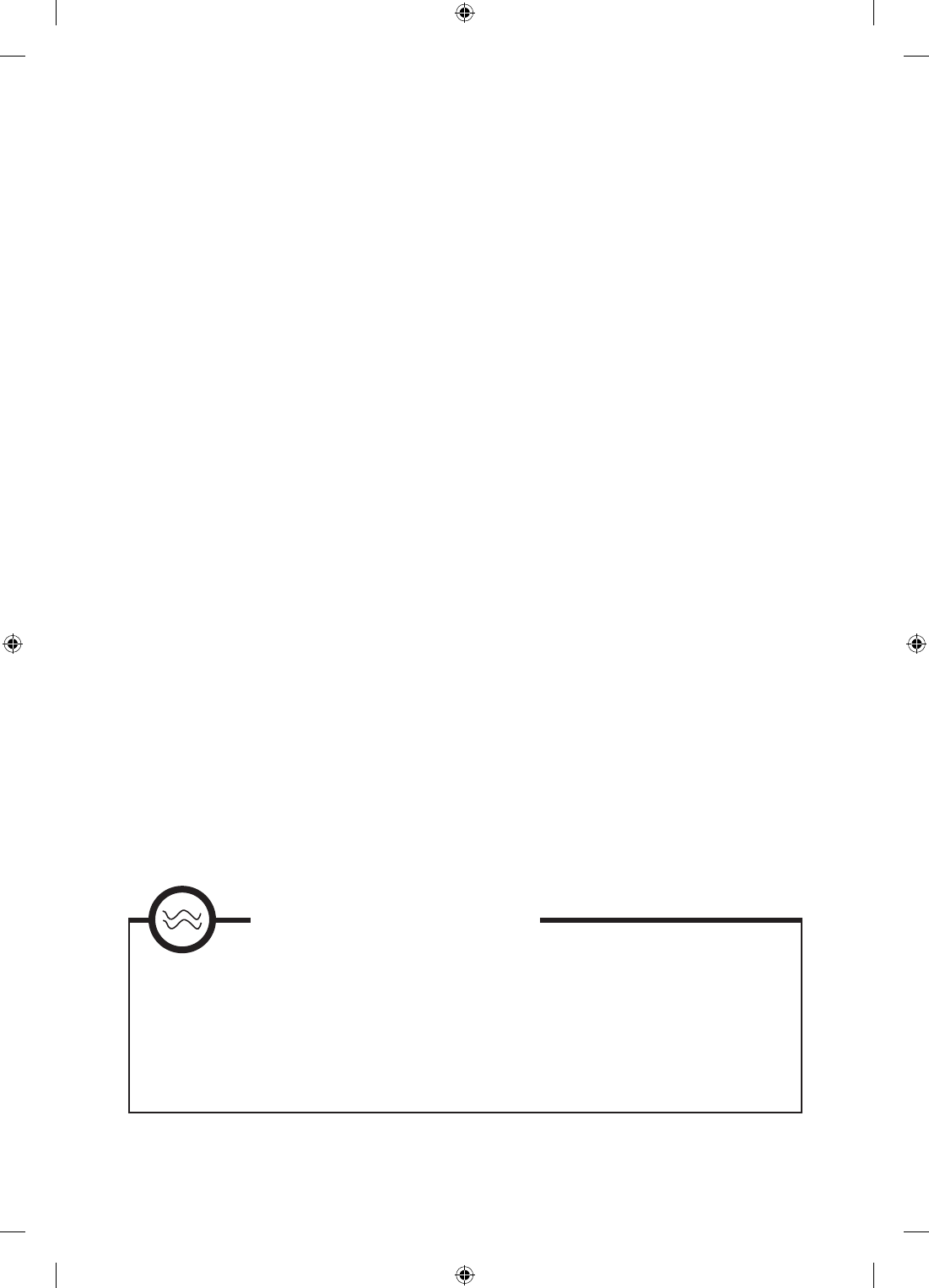
4 Behaviour for Learning
71
began to increase the amount of sanctions she used – e.g. individual children lost their playtime if they
had hurt others – and she found herself raising her voice to counteract the loudness of the children.
However, this did little to improve the situation.
Sarah was advised by her induction mentor to step back and review what was happening, so she system-
atically made a series of focused observations of the class at particular times. She also asked her class
TA as well as her mentorto do some observations as well.
What emerged was that it was not the whole class causing the disruptive atmosphere, but a small group of
individual children who were independently becoming restless and off-task within a short time of going to
their table-top activities. These particular children were often fidgety and distracted each other by getting
out of their seats, chatting to others, calling out across the classroom and getting into minor conflicts.
Having identified the issues, Sarah used the B4L framework to try to problem-solve them. She addressed
each of the relationships in the framework – participation, engagement and access – and set up the fol-
lowing action plan.
Participation (relationship with others) To enable this group of children to interact with others more
positively,Sarah directed each of them to activities that required them to work in pairs or take turns and
interact in mutually supportive ways rather than to work individually on parallel tasks –e.g. setting up a
shopping role-play for counting money. She also introduced regular circle-time sessions for the whole
class, initially focusing on talking and listening, and being kind to each other.
Engagement (relationship with self) To encourage those children who were calling out and becoming
increasingly loud to understand and value quietness, Sarah introduced individual ‘quiet voice’ targets as
well as using the Too Noisy app (an application for electronic devices which monitors noise levels and
sets off a visual and audible alarm). She practised and modelled different noise levels with the children
in a fun way to help them recognise and control the volume of their voices, and gave particular attention
and praise to those who were the quietest.
Access (relationship with the curriculum) To increase the children’s motivation and interest in the tasks
set, Sarah made sure that each task had a physically active, multi-sensory element. Having previously lim-
ited the children’s access to the outside area because of the colder weather, she reinstated more activities
in the covered outdoor play space and made sure that every child had warm, waterproof clothing.
Within a couple of weeks, there was a marked change in the atmosphere in Sarah’s classroom; it was
calmer and quieter, and the children who had previously been rowdy and loud, were increasingly on-
task and more cooperative. The most successful strategies seemed to be using the Too Noisy app and
increasing the amount of opportunities to be active and outside.
Questions For Discussion/Reflection
1. What tensions might there be in using the B4L concept alongside traditional behaviourist
methods?
2. What other ways can the B4L framework be used to support positive learning behaviour?
3. How might the framework be shared with parents/carers?
4. How could the B4L framework be used to support individual children with challenging behaviour?
06_WAUGH_BTGOP_CH_04.indd 71 4/26/2017 10:59:13 AM

4 Behaviour for Learning
72
Attachment awareness
Children are not slates from which the past can be rubbed by a duster or a sponge, but human beings
who carry their previous experiences with them and whose behaviour in the present is profoundly
affected by what has gone before.
(Bowlby, 1951, p. 114)
The theory of attachment was first proposed by John Bowlby who believed that children need to
develop a secure attachment to their main care-giver during their early years in order to thrive emo-
tionally, physically and cognitively (Bowlby, 1951). Subsequent research, and in particular recent
advances in neuroscience, have confirmed and extended Bowlby’s theory such that it is now well
understood that not only do a child’s primary attachments lay the foundations for their capacity to
learn, but also that a child with secure attachment relationships will achieve higher academic attain-
ment, have better self-regulation and be more socially competent than their insecurely attached
counterparts (Rose etal., 2013).
Now that it is widely recognised that a child with an attachment disorder is highly likely to strug-
gle with all aspects of school life, some of the most challenging behaviours that teachers encounter
in classrooms today can be explained by children displaying the effects of insecure attachment
(Cozolino, 2013). Nevertheless, there is increasing evidence to suggest that teachers can make
a difference in ameliorating some of the impact of disordered attachment while at the same time
enhancing the learning experiences of all pupils (Tucker etal., 2002; Davis, 2003). This is partly
based on the suggestion that children can form multiple attachments (Sroufe, 1995; Robson, 2011)
and that an attuned, empathetic and responsive teacher can enable children to self-regulate their
behaviour through forming positive and secure relationships with them (Bergin and Bergin, 2009).
One method that has been shown to be effective in helping adults in school to build strong, sup-
portive relationships with children whose behaviour is challenging, and who struggle to focus on
learning or calm down when they are in a highly charged emotional state, is the use of emotion
coaching (Rose etal., 2015). It is an intervention that has had significantly positive results for chil-
dren with a range of behavioural disorders, but in particular for children with attachment issues.
Emotion coaching
The emotion coaching approach (or meta-emotion philosophy) was developed by John Gottman
(Gottman and DeClaire, 1997) and is based on the development of self-regulation through recogni-
tion of the emotions that are driving behaviour rather than the behaviour itself. It enables children
to understand and express their feelings in appropriate and more socially acceptable ways, supports
their capacity to refocus on learning when overwhelmed with strong feelings, and helps them to
become more emotionally resilient. The practice requires adults to ‘empathise and guide’ through
a series of suggested interactions. These have been broken down into three key steps by Rose etal.
(2015) who conducted a two-year pilot project on emotion coaching in schools in Wiltshire. The
steps include validating the child’s feelings in the first instance through an empathetic and sensi-
tive acknowledgement of their emotional state, without focusing on their behaviour. This has been
shown to have a powerful effect in calming children down and in physiological terms suggests that
06_WAUGH_BTGOP_CH_04.indd 72 4/26/2017 10:59:13 AM

4 Behaviour for Learning
73
simply recognising and engaging with the emotions being experienced can trigger the parasympa-
thetic system (Immordino-Yang and Damasio, 2007). Guidance comes in the form of the next step,
which may not always be necessary but which requires the establishment of boundaries, making it
clear that while accepting the emotions being felt, there are limits to what is acceptable behaviour.
This provides the child with direction and safety, supporting them in their understanding of what is
socially appropriate and the consequences of anti-social or harmful behaviour. The final step occurs
later, when the child has fully calmed down, and involves adult and child revisiting the incident
and problem-solving together how to avoid a recurrence. This engagement is designed to further
develop a trusting and nurturing relationship between the adult and child as well as give the child
the opportunities to ‘own’ their behaviour and better learn emotional self-regulation.
The following case study illustrates how emotion coaching made a significant difference to the rela-
tionship between a troubled boy and his teacher.
Case Study
Using emotion coaching to help a child with anger issues
Gemma is a Yr3 teacher in a large primary school with a mixed demographic. She has been teaching for
five years and was recently trained in emotion coaching techniques as part of a cluster-wide training and
found it particularly helpful when working with one child in her class, Tristan, whose angry outbursts
would often disrupt her teaching and create an atmosphere of fear and anxiety among the other children.
Tristan is the eldest of a family of four children and lives with his mum and stepdad. He has a different
father from his three siblings and although he has some contact with his own dad, it is intermittent and
unreliable. He has struggled with behaviour problems throughout his school career and while he does
not have a diagnosis of an attachment disorder, his mum has been very open about her difficulties in
bonding with him as a baby and her continued concern about his behaviour.
Knowing Tristan’s history, Gemma tried to establish a positive relationship with him from the outset
and the first term went quite well with only a few minor incidents, but soon Tristan’s old behaviour
patterns began to re-emerge. He started having outbursts of frustration, such as tearing up his work
or throwing equipment on the floor or shouting at other children, and when asked the reason for
his outbursts, would claim that the work he had been set was too hard or someone in the class had
insulted him or got in his way. Gemma’s response was to try to control the situation by using the class
sanctions – for example, telling Tristan that he had lost minutes from his Golden Time or would be stay-
ing in at playtime, but this often escalated into an angrier and occasionally aggressive response from
him, in one instance resulting in him ripping a whole classroom display from the wall and throwing a
chair across the room. This was considered sufficiently dangerous for the head teacher to be called.
She sent Tristan home and imposed a one-day fixed term exclusion, which had happened on a number
of occasions the previous year.
On Tristan’s return it was agreed that sanctions seemed to be ineffective and a different approach was
needed. Gemma was keen to try emotion coaching instead and planned the three-step method learned
on her training: recognising and validating feelings and showing empathy; setting limits on behaviour;
problem-solving with the child.
(Continued)
06_WAUGH_BTGOP_CH_04.indd 73 4/26/2017 10:59:13 AM

4 Behaviour for Learning
74
Gemma began by watching for early signs of Tristan becoming frustrated and would try to intervene quickly
by naming his emotions verbally and offering to talk them through by saying ‘I can see you’re getting very
frustrated and upset right now. That must be hard for you. Shall we talk about how you’re feeling?’ When
empathising with Tristan’s feelings, Gemma noticed that he began to calm down almost immediately and,
once calm, he was able to talk about his frustration and anger with her and they worked together to think of
some ways by which they could prevent his feelings from leading to damaging behaviours.
When Gemma was unable to identify the signs of Tristan’s frustration early enough and he had an
outburst and behaved inappropriately, instead of using a sanction Gemma would include limit-setting
statements in her response, such as ‘I can see you are angry now but it’s not OK to rip up your work or
shout at people. I need to help you to feel calm so that you don’t break anything or hurt anyone’, and
encourage Tristan to use some of the calming down techniques they had discussed and been practis-
ing. One of these was to sit in the classroom’s ‘Peaceful Place’ which was screened off from the rest of
the class and had tactile and sensory objects such as glass beads, colouring-in sheets, soft fabrics, gen-
tle music (to listen to through headphones) and cognitive prompts such as a display, photos and books
about feelings and problem-solving.
Emotion coaching did not eliminate Tristan’s problems completely, but Gemma noticed that the approach
did have a significant effect on the frequency of his outbursts and that he was able to calm down much
more quickly, usually without causing any damage. Over time, Tristan learnt to recognise for himself
when his feelings were getting the better of him and would seek out Gemma or another adult to talk
things through or would implement one of his calming down techniques.
Questions For Discussion/Reflection
1. What are the barriers to learning for children with attachment difficulties?
2. How can emotion coaching be included in everyday interactions?
3. What challenges are there in using emotion coaching for an individual while expecting other
children to follow the usual classroom rules?
4. How might emotion coaching be shared with parents/carers?
5. In what other ways can emotional literacy be developed in the classroom?
Research/evidence focus
Classroom codes
Creating a classroom code that reflects the school behaviour policy but is personalised for each class
of children can be a really effective way to establish and maintain positive learning behaviour. The cur-
rent view in positive psychology is that when classroom rules are made explicit, children experience a
(Continued)
06_WAUGH_BTGOP_CH_04.indd 74 4/26/2017 10:59:13 AM

4 Behaviour for Learning
75
sense of safety and well-being which enhances their capacity to learn (Swinson and Harrop, 2012). Porter
(2014) claims that 89 per cent of disruptive behaviours can be prevented when teachers consistently
provide clear behaviour expectations. Articulating desired behaviours in an accessible and positive way
removes uncertainty for children who feel anxious or vulnerable about what is expected of them (and
what might get them into trouble). It also enables teachers to feel more confident that their behaviour
expectations will be met (Holmes, 2009). Government guidance is unequivocal that school behaviour
policies need to include a set of rules and Charlie Taylor’s guidance (DfE, 2011) exhorts teachers to
Display school rules clearly in classes and around the building. However, government advice on how to
develop these rules is minimal and mostly set within the context of rewards and sanctions (DfE, 2016a),
rules, rewards and sanctions being referred to by Ellis and Tod as the behavioural trinity (2009, p151).
More recent advice offered to trainee teachers from the ‘Behaviour Guru’ Tom Bennett does not refer to
classroom rules as such, but in his 3 Rs of the Behaviour Curriculum (DfE, 2016b) he recommends that
teachers communicate shared values and behaviours openly, and regularly model and reinforce expecta-
tions and boundaries.
Rights respecting schools and classroom charters
Most authors who provide advice on how to create an effective classroom code agree on similar
principles – namely, that the expectations should be inclusive, explicit, few in number and phrased
positively (Dix, 2007; Holmes, 2009; Chaplain, 2014; Robinson etal., 2016). They also suggest that
when children have some involvement in the design of their classroom code, they feel a sense of
ownership and are more likely to be motivated not only to cooperate fully themselves, but also to
encourage their peers to as well. Rogers (2012) goes further and promotes the use of a framework of
rights, responsibilities and rules based on an agreed set of values shared by the whole school com-
munity. He believes that behaving well is the joint responsibility of all class members and that the
most fundamental rights of a classroom member are those of respect and fair treatment ... they relate to due
responsibility and fair and agreed rules (2012, p15).
The theme of rights and responsibilities as a basis for respectful behaviour in schools has been estab-
lished in England by UNICEF (United Nations International Children’s Emergency Fund) through
an award known as the Rights Respecting Schools (RRS) Award (UNICEF(a)) which promotes the UN
Convention on the Rights of the Child (1989). The award was the result of an initiative introduced
in Hampshire in 2002 to encourage human rights education and develop dispositions and behav-
iours that support social justice within the school community (Covell etal., 2010). Results from this
initiative showed that in participating schools, children demonstrated higher levels of engagement
in learning, more respectful behaviour and greater participation in school life than children in non-
participating schools (Covell and Howe, 2008).
One of the key features of schools that follow the RRS agenda is that, consistent with children’s
rights to participation in matters that affect them (Article 12 of the Convention), school rules and
behaviour codes are decided democratically, giving children opportunities to have a voice in deci-
sions that affect them, and although the remit for the RRS award goes considerably beyond setting
up classroom codes of behaviour, it does provide guidance and support on how to create and use
a classroom charter (UNICEF(b)). In ‘rights-respecting’ schools, at the beginning of each year, chil-
dren and teachers work together in each class to create an agreement of everyone’s rights and their
06_WAUGH_BTGOP_CH_04.indd 75 4/26/2017 10:59:13 AM
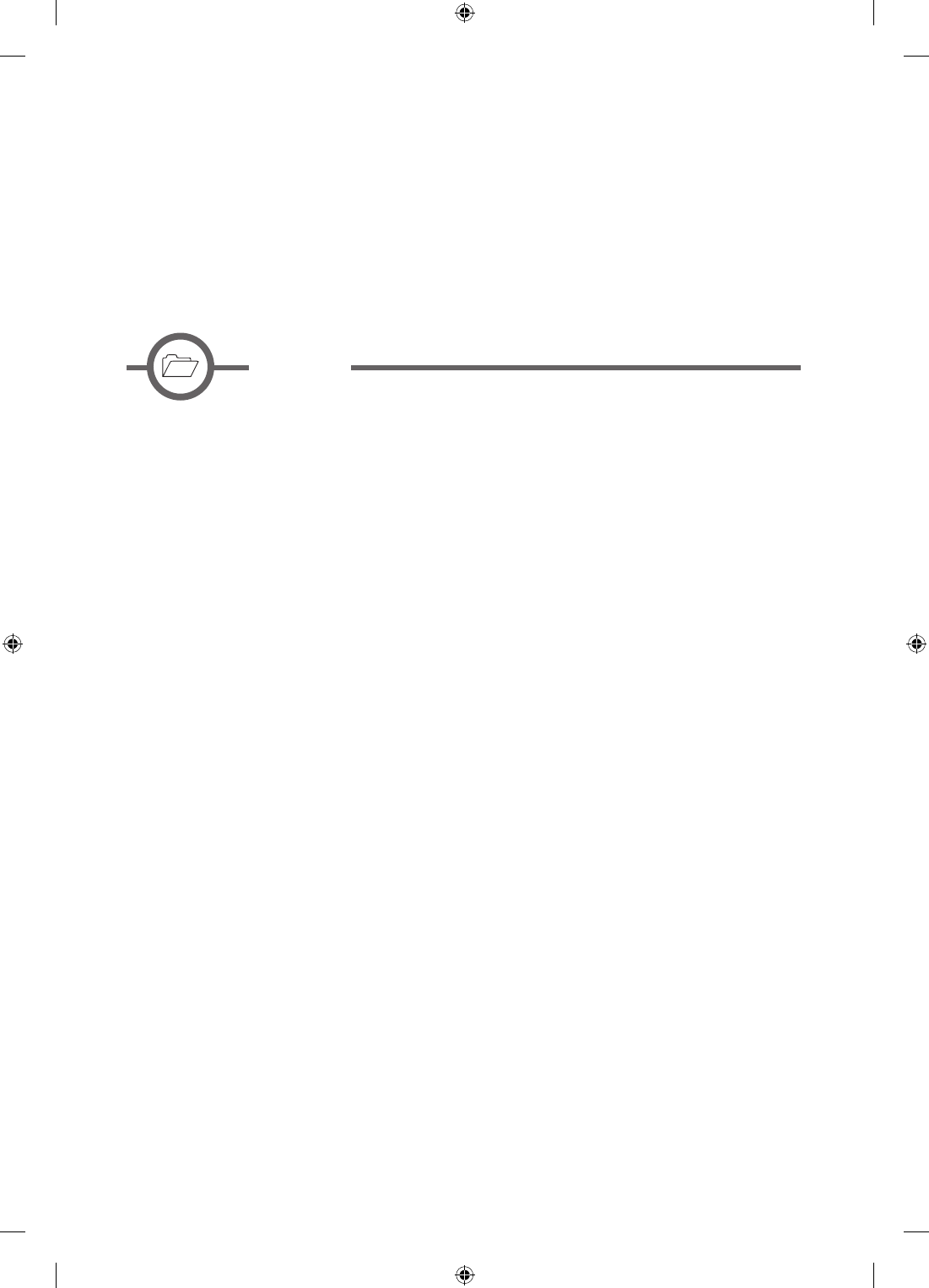
4 Behaviour for Learning
76
corresponding responsibilities. These may include such statements as we have the right to be treated
fairly and the responsibility to treat each other fairly; we have the right to be heard and the responsibil-
ity to listen to and respect other people’s ideas; we all have the right to learn, so we will help each other
(Covell, 2013, p42).
The following case study illustrates how the use of a class charter helped a teacher establish positive
learning behaviour in his classroom.
Case Study
Setting up a class charter to establish behaviour expectations
Craig’s first career was as a graphic designer. He is now into his second year of teaching and takes every
opportunity to bring his creative skills into the classroom. He has an energetic, positive approach and his
lessons are often lively and engaging, but during his NQT year he struggled to maintain positive behav-
iour and cooperation in his class and often felt that he was not fully in control of what was happening. He
began his second year in a Year 5 class in a different school and was keen to establish clear behaviour
expectations from the outset.
The school that Craig moved to is a ‘Rights Respecting School’ (RRS) and he was advised to fol-
low the UNICEF guidance on how to establish a class charter in the first week after the summer
holidays. Using the school’s RRS resources, he planned a series of lessons designed around the UN
Convention of the Rights of the Child (CRC): recapping the articles of the CRC, their importance and
why they exist; discussing with the children which articles to base their class charter on; agreeing
the wording of the charter and designing it; signing the charter and displaying it in the classroom.
The resulting agreement consisted of a list of ‘rights’ with direct links to articles in the CRC, and a
list of ‘responsibilities’ which every member of the class (including Craig and his teaching assistant,
Michelle) signed.
Craig wanted the charter to be meaningful and relevant to all the children in his class, so over the next
two weeks he used a carousel of inclusive activities: drama and role-play, creative writing, photography,
artwork and game design to bring the charter alive and encourage every child to be involved and to feel
a sense of ownership of it. Once the charter was established, he regularly referred to it. For example,
acknowledging children for behaviour that specifically related to one of their class articles: ‘I can see
you two are really listening to each other’s ideas. Well done for following Article 13!’; or using it to remind
children whose behaviour was disrespectful or inappropriate that they were breaking their agreement:
‘I can see that Asif is hurt by what you just said. That is not in keeping with our responsibility to be kind
and respectful to everyone.’ As well as modelling the language of the charter himself, Craig encouraged
the children to use the same words when reflecting on their own behaviour or describing the behaviour
of others following an incident. In this way, he was able to reinforce the behaviour expectations by con-
sistently relating children’s actions to the agreement they had all made.
Although the UNICEF guidance states that a class charter is not intended to be used as a behaviour man-
agement tool, Craig found that by combining it with guidance from the school behaviour policy he was
able to use it to generate a menu of rewards for children who followed the class charter and an agreed
set of consequences if any of the articles were broken. He had a round of discussions with the children,
giving them choices from a range already agreed in the school behaviour policy, until they came to
a consensus about the rewards and consequences they thought were fair for their class. These were
06_WAUGH_BTGOP_CH_04.indd 76 4/26/2017 10:59:13 AM

4 Behaviour for Learning
77
displayed on a poster alongside the charter and included rewards such as a ‘teacher text’ to a parent/
carer’s mobile phone, extra playtime, and an end-of-term class pizza party, as well as the regular whole-
school rewards of house points, afternoon tea with the head teacher and the ‘Big Yellow Duck Award’
(given for particular acts of kindness). Consequences for unkind or uncooperative behaviour were cho-
sen with varying degrees of severity ranging from missing five minutes of playtime or working alone on
the ‘Thinking Table’, to doing ‘community service’ (which involves doing jobs around the school during a
series of lunchtimes) or being placed ‘on report’. In the spirit of being a Rights Respecting School, these
consequences also include opportunities for reparation and supporting children to make amends for any
harm or damage caused.
Craig continued to use the charter, and the rewards and consequences system, on a daily basis and by
the end of term 2 he was pleased to notice that he had been able to teach exciting, highly active and
creative lessons without being concerned that children would be uncooperative or challenging, as had
happened with his previous class. He said ‘the class charter has really made a difference to how I think
about behaviour ... it’s based on everyone respecting each other and looking out for each other ... the
children in my class have ownership of it and are cooperative because they want to be, they make that
choice themselves, not because I’m some strict disciplinarian that makes them do what I want. I’m so
glad I’ve found a way to have good behaviour in my classroom without becoming the stereotypical male
teacher who is “good with discipline” just because I’m a bloke.’
Questions For Discussion/Reflection
1. What are the benefits and disadvantages of using rewards and sanctions?
2. How could the RRS guidance be used in other ways to support positive learning behaviour?
3. What challenges might there be in creating a class charter?
4. What are the rights and responsibilities of the teacher in terms of behaviour in the classroom?
Chapter Summary
This chapter has provided a summary of the context for Behaviour for Learning, explained the
conceptual framework with suggestions on how it can be applied, and given an illustration of its
use as a classroom intervention. By focusing on B4L, it offers a blueprint for creating a positive
learning ethos without resorting to traditional methods of discipline and control. The chapter has
also considered the importance of attachment issues and proposed emotion coaching as a strat-
egy to support children in a highly charged emotional state, a method that can empower children
who are in distress and give teachers greater confidence in using this intervention to support
them. The practice of creating a classroom code or charter also offers children greater ownership
and opportunities for self-regulating their behaviour. It is a positive and effective alternative to
imposing ‘top-down’ rules and further endorses the message from B4L that behaviour manage-
ment is ‘all about relationships’ (Holmes, 2009, p89).
06_WAUGH_BTGOP_CH_04.indd 77 4/26/2017 10:59:13 AM

4 Behaviour for Learning
78
Some final points
• The strategies suggested here are likely to be more powerful if shared with parents/carers, particularly for
those who are coping with challenging behaviour from their children at home. Consider how each method
might be used to forge positive links between home and school.
• School behaviour policies frequently focus on rewards and sanctions, do not take account of the
importance of relationships and are rarely written in consultation with children. Reflect on the way
in which a behaviour policy is translated into practice and how it might be developed and used more
positively and effectively.
• Behaviour for Learning, emotion coaching and the Rights Respecting Schools agenda all take a pro-active
and positive stance towards children’s behaviour. However, the language and practice of behaviourism are
still prevalent in schools and even the word ‘behaviour’ persistently has a negative connotation. Consider
how this might be challenged and how teachers might be encouraged to take a more optimistic approach.
Further reading
Ellis, S and Tod, J (2015) Promoting Behaviour for Learning in the Classroom: Effective Strategies, Personal
Style and Professionalism. Abingdon: Routledge.
This latest book by Ellis and Tod provides further insights into the principles and practice of the B4L
conceptual framework. It draws on teachers’ everyday experiences of interactions and relationships
in the classroom and is designed to appeal to those new to the profession.
Gottman, J and DeClaire, J (1997) Raising an Emotionally Intelligent Child: The Heart of Parenting.
New York: Prentice-Hall.
Although now nearly 20 years old, and addressed to parents, this is Gottman’s seminal work on
emotion coaching and a ‘must read’ for anyone who wants to understand more about this strategy
and how to practise it.
Robins, G (2012) Praise, Motivation and the Child. Abingdon: Routledge.
This highly accessible book written by a former deputy head teacher brings clarity to the theory and
practice of behaviourism, constructivism and positive psychology. It considers the use of extrinsic
and intrinsic rewards, and gives children a voice in expressing what their motivations are and how
teachers can best support them in developing positive learning behaviours.
Useful websites
Attachment Aware Schools: http://attachmentawareschools.com
This website provides a comprehensive introduction to attachment and the implications for learning
and behaviour, as well as links to further resources, including guidance on emotion coaching.
Behaviour4learning: http://webarchive.nationalarchives.gov.uk/20101021152907/http:/www.
behaviour4learning.ac.uk
06_WAUGH_BTGOP_CH_04.indd 78 4/26/2017 10:59:13 AM

4 Behaviour for Learning
79
This website provides background research, resources and ideas for teachers in all aspects of the B4L
approach. Although now part of the national archive, its content is still highly relevant for today’s
classrooms. NQTs may find the ‘26 scenarios’ particularly useful.
Behaviour2Learn videos: www.youtube.com/user/Behaviour4Learning
This collection of video clips covers a broad range of behaviour issues from practical classroom tips
to debates on how best to respond to challenging behaviour.
Rights Respecting Schools: www.unicef.org.uk/rights-respecting-schools/about-the-award/what-
is-the-rights-respecting-schools-award/
This link takes you to the UNICEF site that provides all the information on the RRS award, including
how to create a class charter.
References
Adams, K (2009) Behaviour for Learning in the Primary School. Exeter: Learning Matters.
Bandura, A (1971) Social Learning Theory. New York: General Learning Press.
Bennett, V and Henderson, N (2013) Young children learning: the importance of play. In Ward, S
(ed.) A Student’s Guide to Education Studies (3rd edn). Abingdon: Routledge, pp168–77.
Bergin, C and Bergin, D (2009) Attachment in the classroom. Educational Psychology Review, 21:
141–70.
Bowlby, J (1951) Maternal care and mental health. Bulletin of the World Health Organisation, 3:
355–534.
Bronfenbrenner, U (1979) The Ecology of Human Development: Experiments by Nature and Design.
Cambridge, MA: Harvard University Press.
Chaplain, R (2014) Managing classroom behaviour. In Cremin, T and Arthur, J (eds) Learning to Teach
in the Primary School. London: Routledge, pp181–201.
Covell, K (2013) Children’s human rights education as a means to social justice: a case study from
England. International Journal for Social Justice, 2(1): 35–48.
Covell, K and Howe, RB (2008) Rights, respect and responsibility: final report on the county of
Hampshire Rights Education Initiative. Hampshire County Council.
Covell, K, Howe, RB and McNeil, JK (2010) Implementing children’s human rights education in
schools. Improving Schools, 13(2): 1–16.
Cozolino, LJ (2013) The Social Neuroscience of Education: Optimising Attachment and Learning in the
Classroom. London: WW Norton.
Davis, HA (2003) Conceptualizing the role and influence of student–teacher relationships on chil-
dren’s social and cognitive development. Educational Psychologist, 38(4): 207–34.
Department for Education (2011) Getting the simple things right: Charlie Taylor’s behaviour check-
lists. Available at: www.gov.uk/government/uploads/system/uploads/attachment_data/file/571640/
Getting_the_simple_things_right_Charlie_Taylor_s_behaviour_checklists.pdf (accessed November 2016).
06_WAUGH_BTGOP_CH_04.indd 79 4/26/2017 10:59:13 AM

4 Behaviour for Learning
80
Department for Education (2012a) Teachers’ Standards: guidance for school leaders, school staff
and governing bodies. Available at: www.gov.uk/government/uploads/system/uploads/attachment_
data/file/301107/Teachers__Standards.pdf (accessed November 2016).
Department for Education (2012b) Ensuring good behaviour in schools. Available at: www.gov.
uk/government/uploads/system/uploads/attachment_data/file/239943/Ensuring_Good_Behaviour_
in_Schools-summary.pdf (accessed November 2016).
Department for Education (2016a) Behaviour and discipline in schools: advice for head teach-
ers and schoolstaff. Available at: www.gov.uk/government/uploads/system/uploads/attachment_data/
file/488034/Behaviour_and_Discipline_in_Schools_A_guide_for_headteachers_and_School_Staff.pdf
(accessed November 2016).
Department for Education (2016b) Developing behaviour management content for initial teacher.
Available at: www.gov.uk/government/uploads/system/uploads/attachment_data/file/536889/
Behaviour Management_report_final__11_July_2016.pdf (accessed November 2016).
Department for Education and Skills (2005a) Learning behaviour: the report of the practitio-
ners group on school behaviour and discipline (the Steer Report). Nottingham: DfES. Available at:
http://cw.routledge.com/textbooks/9780415485586/data/BehaviourTheSteerReport.pdf (accessed
November 2016).
Department for Education and Skills (2005b) Excellence and enjoyment: social and emotional
aspects of learning: guidance. Available at: http://webarchive.nationalarchives.gov.uk/2011080
9101133/nsonline.org.uk/node/87009 (accessed November 2016).
Dix, P (2007) Taking Care of Behaviour: Practical Skills for Teachers. Harlow: Pearson Education.
Ellis, S and Tod, J (2009) Behaviour for Learning: Proactive to Behaviour Management. London: David
Fulton.
Ellis, S and Tod, J (2015) Promoting Behaviour for Learning in the Classroom. London: Routledge.
Gerhardt, S (2014) Why Love Matters: How Affection Shapes a Baby’s Brain (2nd edn). London: Routledge.
Gottman, J and Declaire, J (1997) Raising an Emotionally Intelligent Child: The Heart of Parenting.
New York: Prentice-Hall.
Higgins, S, Baumfield, V and Hall, E (2007) Learning skills and the development of learning
capabilities report. In Research Evidence in Education Library. London: EPPI-Centre, Social Science
Research Unit, Institute of Education, University of London.
Holmes, E (2009) (2nd edn) The Newly Qualified Teachers Handbook. London: Routledge.
Immordino-Yang, M and Damasio, A (2007) We feel, therefore we learn: the relevance of affective
and social neuroscience to education. Mind, Brain and Education Journal, 1(1): 310.
Maslow, A (1976) The Farther Reaches of Human Nature. New York: Penguin Books.
Music, G (2016) Nurturing Natures: Attachment and Children’s Emotional, Sociocultural and Brain
Development (2nd edn). London: Routledge.
Paton, G (2014) Ofsted: an hour of teaching each day lost to bad behaviour. Available at: www.
telegraph.co.uk/education/educationnews/11119373/Ofsted-an-hour-of-teaching-each-day-lost-to-bad-
behaviour.html (accessed November 2016).
06_WAUGH_BTGOP_CH_04.indd 80 4/26/2017 10:59:13 AM

4 Behaviour for Learning
81
Porter, L (2014) (3rd edn) Behaviour in Schools: Theory and Practice for Teachers. Maidenhead: Open
University Press.
Powell, S and Tod, J (2004) A Systematic Review of How Learning Theories Explain Learning Behaviour in
School Contexts. London: EPPI-Centre, Social Science Research Unit, Institute of Education, University
of London.
Robinson, C, Bingle, B and Howard, C (2016) Surviving and Thriving as an NQT. Northwich:
Critical Publishing.
Robson, S (2011) Attachment and relationships. In Moyles, J, Georgeson, J and Payler, J (eds) Beginning
Teaching, Beginning Learning: In Early Years and Primary Education. Maidenhead: Open University Press.
Rogers, B (2012) (3rd edn) You Know the Fair Rule. Harlow: Pearson.
Rose, J, Gilbert, L and Smith, H (2013) Affective teaching and the affective dimensions of learn-
ing. In Ward, S (ed.) A Student’s Guide to Education Studies (3rd edn). Abingdon: Routledge, pp178–88.
Rose, J, McGuire-Snieckus, R and Gilbert, L (2015) Emotion coaching – a strategy for promoting
behavioural self-regulation in children/young people in schools: a pilot study. The European Journal of
Social and Behavioural Sciences, XIII.
Sroufe, A (1995) Emotional Development. Cambridge: Cambridge University Press.
Swinson, J and Harrop, A (2012) Positive Psychology for Teachers. London: Routledge.
Tucker, CM, Zayco, RA, Herman, KC, Reinke, WM, Trujillo, M and Carraway, K (2002)
Teacher and child variables as predictors of academic engagement among low-income African
American children. Psychology in the Schools, 39: 477–88.
UNICEF (a): Rights Respecting Schools Award. Available at: www.unicef.org.uk/rights-respecting-
schools/about-the-award/what-is-the-rights-respecting-schools-award/ (accessed November 2016).
UNICEF (b): Classroom Charters. Available at: www.unicef.ca/sites/default/files/imce_uploads/
UTILITY%20NAV/TEACHERS/DOCS/GC/Classroom_Charters_Instructions.pdf (accessed November
2016).
UNICEF (1989) The United Nations Convention on the Rights of the Child. Available at:
http://353ld710iigr2n4po7k4kgvv-wpengine.netdna-ssl.com/wp-content/uploads/2010/05/UNCRC_
PRESS200910web.pdf (accessed November 2016).
Vickery, A (ed.) (2014) Developing Active Learning in the Primary Classroom. London: Sage.
06_WAUGH_BTGOP_CH_04.indd 81 4/26/2017 10:59:13 AM
